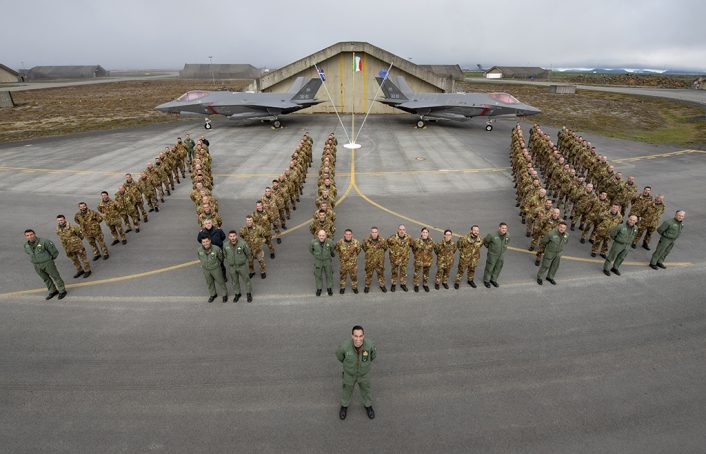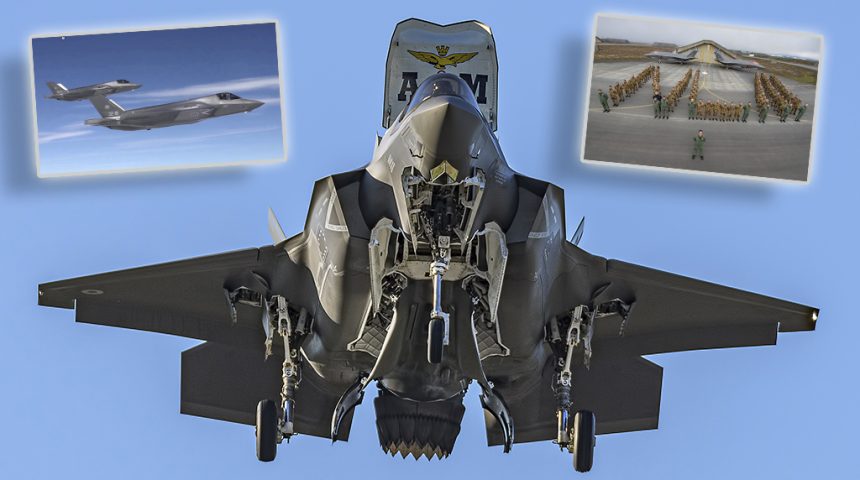Along with the four F-35As supporting NATO’s Icelandic Air Policing, the Italian Air Force has deployed its two F-35B STOVL (Short Take Off Vertical Landing) aircraft for training in Iceland’s cold climate.
For the third time in the last three years, Italy has deployed its F-35 Lightning II aircraft to Iceland, to support NATO’s Interim Air Policing mission “Airborne Surveillance and Interception Capabilities to meet Iceland’s Peacetime Preparedness Needs (ASIC-IPPN)”, more commonly known as Icelandic Air Policing.
Supported by more than 130 military and under the command of Col. Gianmarco Di Loreto, four F-35A belonging to the 13° Gruppo (Squadron) of the 32° Stormo (Wing) of the Italian Air Force have carried out QRA (Quick Reaction Alert) duties from Keflavik International Airport: since the beginning of Operation Northern Lightning III, at the end of April 2022, the Italian F-35As have launched 250 sorties, 28 T-Scramble (Training Alert departures) totalling 433 flight hours.
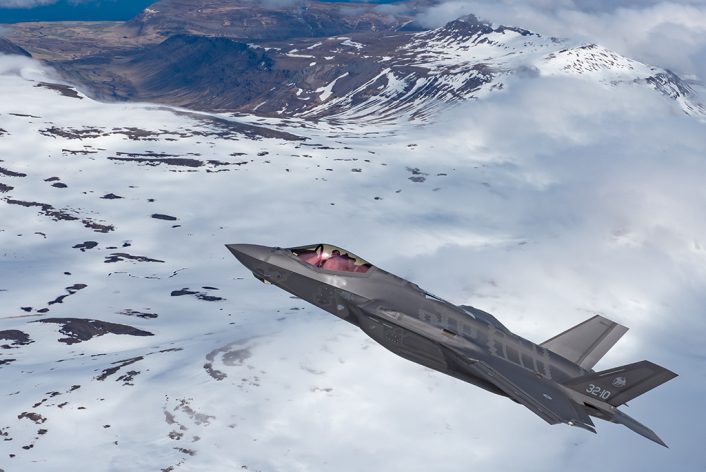
While deploying assets to Iceland is not new to the Italians (this is the third time the Italian F-35s operate there and the seventh Italian participation to the NATO Icelandic Air Policing mission overall), what is remarkable is that the presence of the Italian contingent in the High North for 60 days (the longest in the country) provided the opportunity for the Italian Air Force to deploy its two F-35B STOVL (Short Take Off Vertical Landing) aircraft to Keflavik for the very first time.
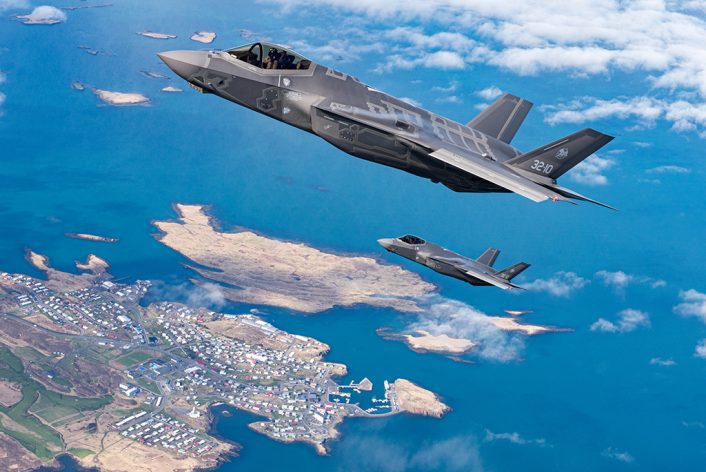
For one week, the two F-35Bs of the Aeronautica Militare have operated from Keflavik to carry out training missions in remote areas and with cold climate. The Italian Air Force deployed the two assets autonomously, thanks to a “trail” supported by a KC-767A tanker of the 14° Stormo from Pratica di Mare escorted by one C-130J from the 46^ Brigata Aerea in oceanic SAR (Search and Rescue) configuration. Thanks to the tanker support, the F-35Bs flew directly from Amendola, in southeastern Italy, to Iceland.
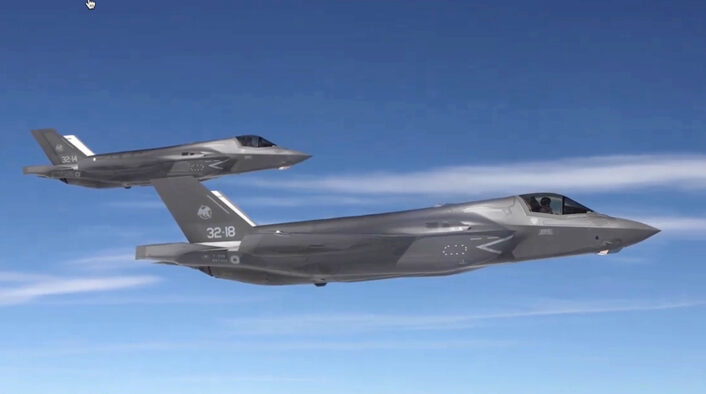
The Italian Air Force considers the F-35B and its STOVL capability a crucial component of a larger expeditionary system that makes the Air Force capable to project power. If the current plans are confirmed, Italy will procure a total of 90 F-35s: 60 F-35As and 30 F-35Bs. Out of those 30 F-35Bs, 15 will go to the Navy and 15 to the Air Force. For the moment, the Italian Air Force has received the two airframes that took part in the deployment to Keflavik (MM7453/32-14 and MM7455/32-18).
Here’s what the former ItAF Chief of Staff, Gen. Alberto Rosso, said during the presentation of the F-35B at Pantelleria in July 2020, when its first F-35B took part in an Expeditionary PoC and, supported by a KC-130J tanker, deployed to the tiny island in the Mediterranean Sea, to demonstrate the ability of the air force to project and use the 5th generation aircraft far from home, in a semi-permissive environment, on an austere/bare runway normally not usable by other conventional aircraft and with limited Force Protection provided by the host nation:
“This capability is extremely important to face new scenarios or situations like the one we had during the Gulf War. Our Tornado jets were deployed to an airbase [Al Dhafra Air Base, UAE] that was far away from the area of operations: this implied that our aircraft had to fly several hours and carry out several aerial refuelings before reaching their targets. The ability to operate from shorter runways can allow the selection of a closer airbase and solve the problem. In terms of flexibility, just think that in Africa there are about 100 runways that have a length between 2,800 and 3,000 meters but there are 20 times as many runways between 1,000 and 1,500 meters in length. Being able to use short runways allows you to multiply your ability to deploy where needed, in a more convenient and faster way, especially closer to the area of operation. Having an aircraft that is capable of taking off from shorter runways allows incredible flexibility even in those scenarios that are currently only barely conceivable. In case of conflict, aircraft that are able to operate from shorter runways can also be dispersed to increase their survivability. This flexibility to operate from bare/austere runways or even highways makes the air power more unpredictable and represents a fundamental capability in any scenario. For this reason, after carefully studying all the scenarios and costs, the Italian Air Force has identified, as done by other air arms, a mixed fleet of F-35A and B aircraft, as the most economically convenient and effective configuration.”
Operation Northern Lighting III will close on Jul. 8, 2022.
